BLOG - Page 29
Recently created mixtures:

Sea-Buckthorn Macerated oil
February 7, 2019

Home made air freshener
June 29, 2016

Homemade Dog-rose distillate
June 28, 2016

Homemade jasmine distillate
June 22, 2016

Moxibustion treatment with Moxa stick
May 30, 2016

Face and body gentle oil cleanser
May 26, 2016
BLOG / LATEST ADDITIONS!
Damask Rose Essential Oil (Rosa Damascena) ☸ Essential oils ☸ Spiritual Practises
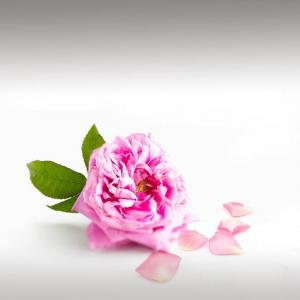
 Rose is self nurturing and instills self love and appreciation, trust and hope.
Rose is self nurturing and instills self love and appreciation, trust and hope.Submitted by OperaDreamhouse (February 19, 2015)
Neroli Essential Oil (Citrus Aurantium) ☸ Essential oils ☸ Spiritual Practises
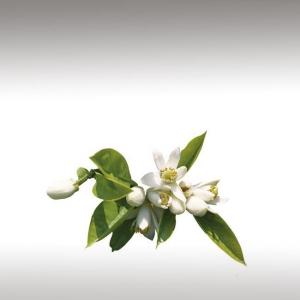

Neroli essential oil could be included in a blend for someone who has experienced physical or sexual abuse as a child.
This oil is all deeper supportive scent. Neroli offers a profound sense of ease. It helps one breath deeply, fill with peace and calm and feel whole. It is such a unique and beautiful note
This oil is all deeper supportive scent. Neroli offers a profound sense of ease. It helps one breath deeply, fill with peace and calm and feel whole. It is such a unique and beautiful note.
This oil is all deeper supportive scent. Neroli offers a profound sense of ease. It helps one breath deeply, fill with peace and calm and feel whole. It is such a unique and beautiful note
This oil is all deeper supportive scent. Neroli offers a profound sense of ease. It helps one breath deeply, fill with peace and calm and feel whole. It is such a unique and beautiful note.
Submitted by OperaDreamhouse (February 19, 2015)
Elemi Essential Oil (Canarium Luzonicum) ☸ Essential oils ☸ Spiritual Practises
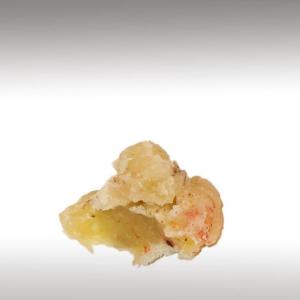

Elemi essential oil open one to mystical experiences and assist in balancing and integrating spiritual and earthly energies.
Submitted by OperaDreamhouse (February 19, 2015)
Coconut Cream (Cocos Nucifera) ☸ Ingredients ☸ Base / General
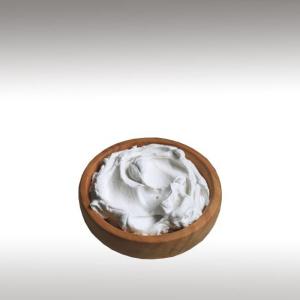

Coconut Cream is very similar to Coconut Milk but contains less water. The difference is mainly consistency. It has a thicker, more paste-like consistency, while Coconut Milk is generally a liquid. Coconut Cream having a mild non-sweet taste. Unsweetened Coconut Cream is made in the same manner as Coconut Milk, only the ratio is one part water (or milk for a richer product) to four parts Coconut.
Coconut Cream can be made by simmering 1 part shredded Coconut with 1 part water or milk until frothy, then straining the mixture through a cheesecloth, squeezing out as much liquid as possible - this is Coconut Milk. The Coconut Milk is refrigerated and allowed to set. Coconut Cream is the thick non-liquid part that separates and rises to the top of the Coconut Milk.
The colour and rich taste of Coconut Cream can be attributed to the high oil content. Most of the fat is saturated fat.
Coconut Cream is the thick non-liquid part that separates and rises to the top of the Coconut Milk
Submitted by OperaDreamhouse (February 18, 2015)
Coconut Cream can be made by simmering 1 part shredded Coconut with 1 part water or milk until frothy, then straining the mixture through a cheesecloth, squeezing out as much liquid as possible - this is Coconut Milk. The Coconut Milk is refrigerated and allowed to set. Coconut Cream is the thick non-liquid part that separates and rises to the top of the Coconut Milk.
The colour and rich taste of Coconut Cream can be attributed to the high oil content. Most of the fat is saturated fat.
Coconut Cream is the thick non-liquid part that separates and rises to the top of the Coconut Milk
Submitted by OperaDreamhouse (February 18, 2015)
Honey (Mellarius) ☸ Ingredients ☸ Base / General
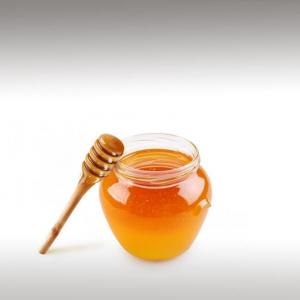

Honey use and production has a long and varied history. In many cultures, honey has associations that go beyond its use as a food. Honey is frequently used as a talisman and symbol of sweetness. Honey collection is an ancient activity. Humans apparently began hunting for honey at least 8,000 years ago, as evidenced by a cave painting in Valencia, Spain. The painting is a Mesolithic rock painting, showing two honey-hunters collecting honey and honeycomb from a wild bee nest.
So far, the oldest remains of Honey have been found in the country of Georgia. Archaeologists have found honey remains on the inner surface of clay vessels unearthed an ancient tomb, dating back some 4,700–5,500 years.
In ancient Egypt, honey was used to sweeten cakes and biscuits, and was used in many other dishes. Ancient Egyptian and Middle Eastern peoples also used honey for embalming the dead. The fertility god of Egypt, Min, was offered honey.
Honey was also cultivated in ancient Mesoamerica. The Maya used Honey from the stingless bee for culinary purposes, and continue to do so today. The Maya also regard the bee as sacred.
Honey is a sweet food made by bees using nectar from flowers. The variety produced by honey bees (the genus Apis) is the one most commonly referred to, as it is the type of honey collected by most beekeepers and consumed by people. Honey bees convert nectar into Honey by a process of regurgitation and evaporation. They store it as a primary food source in wax honeycombs inside the beehive.
Honey gets its sweetness from the monosaccharides fructose and glucose, and has about the same relative sweetness as granulated sugar. It has attractive chemical properties for baking and a distinctive flavor that leads some people to prefer it over sugar and other sweeteners.
Honey's natural sugars are dehydrated, which prevents fermentation, with added enzymes to modify and transform their chemical composition and pH. Invertases and digestive acids hydrolyze sucrose to give the monosaccharides glucose and fructose. Honey bees transform saccharides into Honey by a process of regurgitation, a number of times, until it is partially digested. The bees do the regurgitation and digestion as a group.
Honey is produced by bees as a food source. To produce about 500 g of Honey, foraging Honey bees have to travel the equivalent of three times around the world. In cold weather or when fresh food sources are scarce, bees use their stored honey as their source of energy.
In the hive, the bees use their "Honey stomachs" to ingest and regurgitate the nectar a number of times until it is partially digested. Invertase synthesized by the bees and digestive acids hydrolyze sucrose to give the same mixture of glucose and fructose. The bees work together as a group with the regurgitation and digestion until the product reaches a desired quality. It is then stored in honeycomb cells. After the final regurgitation, the honeycomb is left unsealed.
The melting point of crystallized Honey is between 40 and 50 °C , depending on its composition. The rate of crystallization is affected by many factors, but the primary factor is the ratio of the main sugars: fructose to glucose. Honeys that are supersaturated with a very high percentage of glucose, such as brassica Honey, will crystallize almost immediately after harvesting, while Honeys with a low percentage of glucose, such as chestnut or tupelo honey, do not crystallize.
Raw Honey is Honey as it exists in the beehive or as obtained by extraction, settling or straining, without adding heat (although some Honey that has been "minimally processed" is often labeled as Raw Honey). Raw Honey contains some pollen and may contain small particles of Wax. Some allergy sufferers wrongly believe that raw, local Honey can help build tolerance to the Pollen in the air.
High-quality Honey can be distinguished by fragrance, taste, and consistency. Ripe, freshly collected, high-quality honey at 20 °C should flow from a knife in a straight stream, without breaking into separate drops. After falling down, the honey should form a bead.
In jars, fresh Honey should appear as a pure, consistent fluid, and should not set in layers. Within a few weeks to a few months of extraction, many varieties of Honey crystallize into a cream-colored solid. Some varieties of Honey, including Tupelo, Acacia, and Sage, crystallize less regularly.
Chemical structure:
The average pH of Honey is 3,9, but can range from 3,4 to 6,1. Honey contains many kinds of acids, both organic and amino. Honey can contain up to 18 of the 20 amino acids. However, amino acid content is almost negligible in Honey, accounting for only 0,05–0,1% of the composition. The main amino acid is proline. Amino acids are derived almost solely from the bodies of the bees.
Gluconic acidis formed by the actions of an enzyme called glucose oxidase. Other organic acids are minor, consisting of formic, acetic, butyric, citric, lactic, malic, pyroglutamic, propionic, valeric, capronic, palmitic, and succinic, among many others.
Typical honey analysis:
Fructose - 38.2%
So far, the oldest remains of Honey have been found in the country of Georgia. Archaeologists have found honey remains on the inner surface of clay vessels unearthed an ancient tomb, dating back some 4,700–5,500 years.
In ancient Egypt, honey was used to sweeten cakes and biscuits, and was used in many other dishes. Ancient Egyptian and Middle Eastern peoples also used honey for embalming the dead. The fertility god of Egypt, Min, was offered honey.
Honey was also cultivated in ancient Mesoamerica. The Maya used Honey from the stingless bee for culinary purposes, and continue to do so today. The Maya also regard the bee as sacred.
Honey is a sweet food made by bees using nectar from flowers. The variety produced by honey bees (the genus Apis) is the one most commonly referred to, as it is the type of honey collected by most beekeepers and consumed by people. Honey bees convert nectar into Honey by a process of regurgitation and evaporation. They store it as a primary food source in wax honeycombs inside the beehive.
Honey gets its sweetness from the monosaccharides fructose and glucose, and has about the same relative sweetness as granulated sugar. It has attractive chemical properties for baking and a distinctive flavor that leads some people to prefer it over sugar and other sweeteners.
Honey's natural sugars are dehydrated, which prevents fermentation, with added enzymes to modify and transform their chemical composition and pH. Invertases and digestive acids hydrolyze sucrose to give the monosaccharides glucose and fructose. Honey bees transform saccharides into Honey by a process of regurgitation, a number of times, until it is partially digested. The bees do the regurgitation and digestion as a group.
Honey is produced by bees as a food source. To produce about 500 g of Honey, foraging Honey bees have to travel the equivalent of three times around the world. In cold weather or when fresh food sources are scarce, bees use their stored honey as their source of energy.
In the hive, the bees use their "Honey stomachs" to ingest and regurgitate the nectar a number of times until it is partially digested. Invertase synthesized by the bees and digestive acids hydrolyze sucrose to give the same mixture of glucose and fructose. The bees work together as a group with the regurgitation and digestion until the product reaches a desired quality. It is then stored in honeycomb cells. After the final regurgitation, the honeycomb is left unsealed.
The melting point of crystallized Honey is between 40 and 50 °C , depending on its composition. The rate of crystallization is affected by many factors, but the primary factor is the ratio of the main sugars: fructose to glucose. Honeys that are supersaturated with a very high percentage of glucose, such as brassica Honey, will crystallize almost immediately after harvesting, while Honeys with a low percentage of glucose, such as chestnut or tupelo honey, do not crystallize.
Raw Honey is Honey as it exists in the beehive or as obtained by extraction, settling or straining, without adding heat (although some Honey that has been "minimally processed" is often labeled as Raw Honey). Raw Honey contains some pollen and may contain small particles of Wax. Some allergy sufferers wrongly believe that raw, local Honey can help build tolerance to the Pollen in the air.
High-quality Honey can be distinguished by fragrance, taste, and consistency. Ripe, freshly collected, high-quality honey at 20 °C should flow from a knife in a straight stream, without breaking into separate drops. After falling down, the honey should form a bead.
In jars, fresh Honey should appear as a pure, consistent fluid, and should not set in layers. Within a few weeks to a few months of extraction, many varieties of Honey crystallize into a cream-colored solid. Some varieties of Honey, including Tupelo, Acacia, and Sage, crystallize less regularly.
Chemical structure:
The average pH of Honey is 3,9, but can range from 3,4 to 6,1. Honey contains many kinds of acids, both organic and amino. Honey can contain up to 18 of the 20 amino acids. However, amino acid content is almost negligible in Honey, accounting for only 0,05–0,1% of the composition. The main amino acid is proline. Amino acids are derived almost solely from the bodies of the bees.
Gluconic acidis formed by the actions of an enzyme called glucose oxidase. Other organic acids are minor, consisting of formic, acetic, butyric, citric, lactic, malic, pyroglutamic, propionic, valeric, capronic, palmitic, and succinic, among many others.
Typical honey analysis:
Fructose - 38.2%
Glucose - 31.3%
Maltose - 7.1%
Sucrose - 1.3%
Water - 17.2%
Higher sugars - 1.5%
Ash - 0.2%
Other/undetermined - 3.2%
Because of its unique composition and chemical properties, Honey is suitable for long-term storage, and is easily assimilated even after long preservation. Honey, and objects immersed in Honey, have been preserved for decades and even centuries. Regardless of preservation, Honey may crystallize over time. The crystals can be dissolved by heating the Honey.
Maltose - 7.1%
Sucrose - 1.3%
Water - 17.2%
Higher sugars - 1.5%
Ash - 0.2%
Other/undetermined - 3.2%
Because of its unique composition and chemical properties, Honey is suitable for long-term storage, and is easily assimilated even after long preservation. Honey, and objects immersed in Honey, have been preserved for decades and even centuries. Regardless of preservation, Honey may crystallize over time. The crystals can be dissolved by heating the Honey.
Submitted by OperaDreamhouse (February 18, 2015)
Sea Salt ☸ Ingredients ☸ Base / General
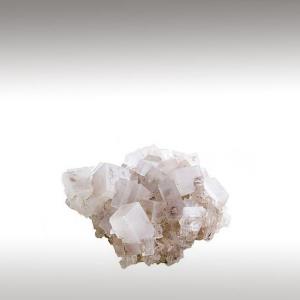

Sea Salt is salt produced from the evaporation of seawater. It is also called Bay Salt or Solar Salt. Like mineral Salt, production of Sea Salt has been dated to prehistoric times. Some cooks believe it tastes better than Salt from mines. However, there is little or no health benefit to using Sea Salt over other forms of Sodium Chloride Salts.
The chemical composition of Sea Salt is typically the same as the ions dissolved in seawater. The typical composition by dry weight percent includes: 55.5% Chloride, 30.8% Sodium, 7.7% Sulfate, 3.7% Magnesium 1.2% Calcium, 1.1% Potassium.
Sea Salt is mentioned in the Vinaya Pitaka, a Buddhist scripture compiled in the mid-5th century BC. The principle of production is evaporation of the water from the sea brine. In warm and dry climates this may be accomplished entirely by using solar energy, but in other climates fuel sources have been used.
The chemical composition of Sea Salt is typically the same as the ions dissolved in seawater. The typical composition by dry weight percent includes: 55.5% Chloride, 30.8% Sodium, 7.7% Sulfate, 3.7% Magnesium 1.2% Calcium, 1.1% Potassium.
Sea Salt is mentioned in the Vinaya Pitaka, a Buddhist scripture compiled in the mid-5th century BC. The principle of production is evaporation of the water from the sea brine. In warm and dry climates this may be accomplished entirely by using solar energy, but in other climates fuel sources have been used.
Modern Sea Salt production is almost entirely found in Mediterranean and other warm, dry climates.
Submitted by OperaDreamhouse (February 18, 2015)
Kokum Butter (Garcinia Indica) ☸ Base oils ☸ Base / General
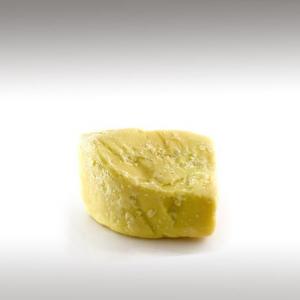

Although some people place the Kokums origins in Africa, others believe Kokum is indigenous to the Western Ghats of India. Kokum is an indigenous tree of the tropical rain forests of the Western Ghats of South India. This evergreen tree is mainly found along the west coast of the Konkan, Goa, Karnataka and North Malabar. It is also referred to as Goa Butter.
Kokum oil comes from the seeds of the Kokum tree (Garcinia Indica). This fruit-bearing tree is also known as the wild mangosten tree, and also the red mangosten tree. The oil extracted from the seeds is edible, and it can also be used for things other than cooking.
The mature tree grows up to 15 to 18 meters in height. It is predominant in the East Indies. It takes about 7 to 10 years for it to bear an economical amount of fruit.
In India the fruits ripen in April and May. An average tree yields 60 to 80 kilograms of fruit, the fruit is berry-like. It appears dark purple when ripe and is spherical in shape and Lemon-sized, with a diameter of about 2,5 - 3,0 cm. The fruit has an agreeable flavor and a sweet, acidic taste.
The fruits contain five to eight large seeds which account for 20 to 23% of the fruits weight. The kernels account for 61% of the weight of the seed, while the oil content of the kernel accounts for about 44%.
The seeds are compressed and embedded in an acidic pulp. The oil content of the seeds is 23 - 26%. The average yield of seeds for a tree is 10 - 15 kilograms. The fruits are collected for seeds from April to May. The kernels account for 60% of the fruit by weight. The oil content of a kernel is 41 - 42%. A kernel contains protein up to 17%.
Chenical structure:
Kokum oil or Kokum Butter is light gray or yellowish in color. After refining, the Kokum fat is equivalent to Vanaspati Ghee.
Kokum oil contains up to 60 - 65% saturated fatty acid, making it solid at room temperature, so this oil is known as Kokum butter or Kokum Fat. Its triglyceride composition is uniform and consists of up to 80% of stearic-oleic-stearic triglycerides.
Kokum Butter also contains antioxidants and Vitamin E. The butter melts readily on contact with the skin.
Kokum oil comes from the seeds of the Kokum tree (Garcinia Indica). This fruit-bearing tree is also known as the wild mangosten tree, and also the red mangosten tree. The oil extracted from the seeds is edible, and it can also be used for things other than cooking.
The mature tree grows up to 15 to 18 meters in height. It is predominant in the East Indies. It takes about 7 to 10 years for it to bear an economical amount of fruit.
In India the fruits ripen in April and May. An average tree yields 60 to 80 kilograms of fruit, the fruit is berry-like. It appears dark purple when ripe and is spherical in shape and Lemon-sized, with a diameter of about 2,5 - 3,0 cm. The fruit has an agreeable flavor and a sweet, acidic taste.
The fruits contain five to eight large seeds which account for 20 to 23% of the fruits weight. The kernels account for 61% of the weight of the seed, while the oil content of the kernel accounts for about 44%.
The seeds are compressed and embedded in an acidic pulp. The oil content of the seeds is 23 - 26%. The average yield of seeds for a tree is 10 - 15 kilograms. The fruits are collected for seeds from April to May. The kernels account for 60% of the fruit by weight. The oil content of a kernel is 41 - 42%. A kernel contains protein up to 17%.
Chenical structure:
Kokum oil or Kokum Butter is light gray or yellowish in color. After refining, the Kokum fat is equivalent to Vanaspati Ghee.
Kokum oil contains up to 60 - 65% saturated fatty acid, making it solid at room temperature, so this oil is known as Kokum butter or Kokum Fat. Its triglyceride composition is uniform and consists of up to 80% of stearic-oleic-stearic triglycerides.
Kokum Butter also contains antioxidants and Vitamin E. The butter melts readily on contact with the skin.
Submitted by OperaDreamhouse (February 12, 2015)
Laurel Seed Oil (Laurus Nobilis) ☸ Base oils ☸ Base / General
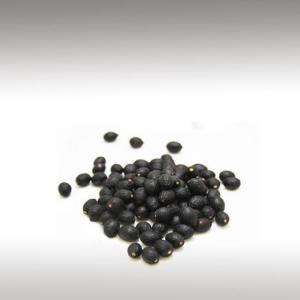

Laurus Nobilis is an aromatic evergreen tree or large shrub with green, glossy leaves, native to the Mediterranean region. Laurus Nobilis figures prominently in classical Greek, Roman, and Biblical culture. The Laurel can vary greatly in size and height, sometimes reaching 10 - 18 metres tall. Laurus is a genus of evergreen trees belonging to the Laurel family, Lauraceae.
Most of the last remaining laurel forests around the Mediterranean are believed to have disappeared approximately ten thousand years ago, although some remnants still persist in the mountains of southern Turkey,northern Syria, southern Spain, north-central Portugal, northern Morocco, Canary Islands and in Madeira.
Bay Laurel was used to fashion the laurel wreath of ancient Greece, a symbol of highest status. A wreath of Bay Laurels was given as the prize at the Pythian Games because the games were in honor of Apollo, and the laurel was one of his symbols.
The symbolism carried over to Roman culture, which held the Laurel as a symbol of victory. Ovid tells the story in the Metamorphoses that Laurel tree was first formed when the nymph Daphne was changed into a Laurel tree because of Apollo's pursuit of her. Daphne is the Greek name for the tree.
In the Bible, the laurel is often an emblem of prosperity and fame. In Christian tradition, it symbolizes the resurrection of Christ.
It grows wild in Spain, Italy and France, flowering in May, the fruit being ripe in October. The fruit is a small, shiny black berry-like drupe about 1 cm long that contains one seed.
Chemical structure:
Both essential and fatty oils are present in the fruit. The fruit is pressed and water-extracted to obtain these products. The fruit contains up to 30% fatty oils and about 1% essential oils (terpenes, sesquiterpenes, alcohols, and ketones).
Most of the last remaining laurel forests around the Mediterranean are believed to have disappeared approximately ten thousand years ago, although some remnants still persist in the mountains of southern Turkey,northern Syria, southern Spain, north-central Portugal, northern Morocco, Canary Islands and in Madeira.
Bay Laurel was used to fashion the laurel wreath of ancient Greece, a symbol of highest status. A wreath of Bay Laurels was given as the prize at the Pythian Games because the games were in honor of Apollo, and the laurel was one of his symbols.
The symbolism carried over to Roman culture, which held the Laurel as a symbol of victory. Ovid tells the story in the Metamorphoses that Laurel tree was first formed when the nymph Daphne was changed into a Laurel tree because of Apollo's pursuit of her. Daphne is the Greek name for the tree.
In the Bible, the laurel is often an emblem of prosperity and fame. In Christian tradition, it symbolizes the resurrection of Christ.
It grows wild in Spain, Italy and France, flowering in May, the fruit being ripe in October. The fruit is a small, shiny black berry-like drupe about 1 cm long that contains one seed.
Chemical structure:
Both essential and fatty oils are present in the fruit. The fruit is pressed and water-extracted to obtain these products. The fruit contains up to 30% fatty oils and about 1% essential oils (terpenes, sesquiterpenes, alcohols, and ketones).
Submitted by OperaDreamhouse (February 12, 2015)
Sugar Cane Sugar (Saccharum Officinarum) ☸ Ingredients ☸ Base / General
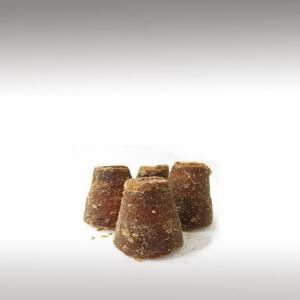

Sugar Cane is one of the several species of tall perennial true grasses of the genus Saccharum, native to the warm temperate to tropical regions of South Asia, and used for sugar production. Brazil was the largest producer of Sugar Cane in the world. The next five major producers, in decreasing amounts of production, were India, China, Thailand, Pakistan and Mexico.
Sugar Cane predominantly grows in the tropical and subtropical regions. In India, between the sixth and fourth centuries BC, the Persians, followed by the Greeks, discovered the famous "reeds that produce honey without bees". They adopted and then spread sugar and Sugar Cane agriculture. A few merchants began to trade in Sugar - a luxury and an expensive spice until the 18th century.
It is theorized that Sugar Cane was first domesticated as a crop in New Guinea around 6000 BC. New Guinean farmers and other early cultivators of Sugar Cane chewed the plant for its sweet juice.
Boiling houses in the 17th through 19th centuries converted sugarcane juice into Raw Sugar. These houses were attached to sugar plantations in the Western colonies.
Sugar Cane is a tropical, perennial grass that forms lateral shoots at the base to produce multiple stems, typically three to four metres high and about five cm in diameter.
Sugar Cane predominantly grows in the tropical and subtropical regions. In India, between the sixth and fourth centuries BC, the Persians, followed by the Greeks, discovered the famous "reeds that produce honey without bees". They adopted and then spread sugar and Sugar Cane agriculture. A few merchants began to trade in Sugar - a luxury and an expensive spice until the 18th century.
It is theorized that Sugar Cane was first domesticated as a crop in New Guinea around 6000 BC. New Guinean farmers and other early cultivators of Sugar Cane chewed the plant for its sweet juice.
Boiling houses in the 17th through 19th centuries converted sugarcane juice into Raw Sugar. These houses were attached to sugar plantations in the Western colonies.
Sugar Cane is a tropical, perennial grass that forms lateral shoots at the base to produce multiple stems, typically three to four metres high and about five cm in diameter.
The stems grow into cane stalk, which when mature constitutes approximately 75% of the entire plant. A mature stalk is typically composed of 11 - 16% fiber, 12 - 16% soluble sugars, 2 - 3% non-sugars, and 63 - 73% water.
Sugar Cane cultivation requires a tropical or temperate climate, with a minimum of 60 centimetres of annual moisture. It is one of the most efficient photosynthesizers in the plant kingdom. It is a C4 plant, able to convert up to one percent of incident solar energy into biomass.
Sugar Cane cultivation requires a tropical or temperate climate, with a minimum of 60 centimetres of annual moisture. It is one of the most efficient photosynthesizers in the plant kingdom. It is a C4 plant, able to convert up to one percent of incident solar energy into biomass.
Sugar Cane is cultivated in the tropics and subtropics in areas with a plentiful supply of water, for a continuous period of more than six to seven months each year, either from natural rainfall or through irrigation. The crop does not tolerate severe frosts.
Traditionally, Sugar cane processing requires two stages. Mills extract Raw Sugar from freshly harvested cane and "mill-white” Sugar is sometimes produced immediately after the first stage at Sugar-extraction mills, intended for local consumption.
Traditionally, Sugar cane processing requires two stages. Mills extract Raw Sugar from freshly harvested cane and "mill-white” Sugar is sometimes produced immediately after the first stage at Sugar-extraction mills, intended for local consumption.
Sugar crystals appear naturally in white color during the crystallization process. Sulfur dioxide is added to inhibit the formation of color-inducing molecules as well as to stabilize the Sugar juices during evaporation.
Sugar cane processing produces cane sugar (sucrose) from sugarcane. Other products of the processing include bagasse, molasses, and filtercake.
Sugar cane processing produces cane sugar (sucrose) from sugarcane. Other products of the processing include bagasse, molasses, and filtercake.
Submitted by OperaDreamhouse (February 6, 2015)
Lemon Juice (Citrus Limon) ☸ Ingredients ☸ Base / General
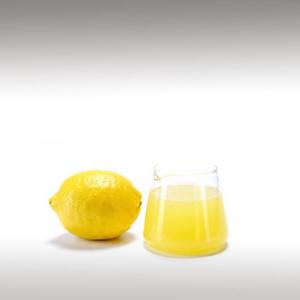

The Lemon (Citrus Limon) is a small evergreen tree native to Asia. The tree's ellipsoidal yellow fruit is used for culinary and non-culinary purposes throughout the world, primarily for its juice, though the pulp and rind (zest) are also used in cooking and baking. The Juice of the Lemon is about 5% to 6% citric acid, which gives Lemons a sour taste. The distinctive sour taste of Lemon Juice makes it a key ingredient in drinks and foods such as lemonade and lemon meringue pie.
The first substantial cultivation of Lemons in Europe began in Genoa in the middle of the 15th century.The lemon was later introduced to the Americas in 1493 when Christopher Columbus brought Lemon seeds to Hispaniola on his voyages. Spanish conquest throughout the New World helped spread Lemon seeds.
The origin of the word "lemon" may be Middle Eastern. One of its earliest occurrences appears in a Middle English customs document of 1420–1421.
In 1747, James Lind's experiments on seamen suffering from scurvy involved adding Lemon juice to their diets, though Vitamin C was not yet known.
Lemon Juice is also used as a short-term preservative on certain foods that tend to oxidize and turn brown after being sliced (enzymatic browning), such as Apples, Bananas, and Avocados, where its acid denatures the enzymes.
The Juice of the Lemon may be used for cleaning. A halved Lemon dipped in Salt or Baking Powder is used to brighten copper cookware. The acid dissolves the tarnish and the abrasives assist the cleaning.
The first substantial cultivation of Lemons in Europe began in Genoa in the middle of the 15th century.The lemon was later introduced to the Americas in 1493 when Christopher Columbus brought Lemon seeds to Hispaniola on his voyages. Spanish conquest throughout the New World helped spread Lemon seeds.
The origin of the word "lemon" may be Middle Eastern. One of its earliest occurrences appears in a Middle English customs document of 1420–1421.
In 1747, James Lind's experiments on seamen suffering from scurvy involved adding Lemon juice to their diets, though Vitamin C was not yet known.
Lemon Juice is also used as a short-term preservative on certain foods that tend to oxidize and turn brown after being sliced (enzymatic browning), such as Apples, Bananas, and Avocados, where its acid denatures the enzymes.
The Juice of the Lemon may be used for cleaning. A halved Lemon dipped in Salt or Baking Powder is used to brighten copper cookware. The acid dissolves the tarnish and the abrasives assist the cleaning.
Submitted by OperaDreamhouse (February 6, 2015)
Ho Wood Essential Oil (Cinnamomum Camphora) ☸ Essential oils ☸ Base / General
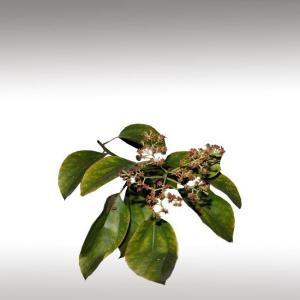

Botanical Name: Cinnamomum camphora
Common Method of Extraction: Steam Distillation
Part Typically Used: Leaves and twigs
Color: Transparent liquid
Consistency: Thin
Perfumery Note: Middle
Strength of Initial Aroma: Bright, warm, slightly woody
Cinnamomum Camphora is native to China south of the Yangtze River, Taiwan, southern Japan, Korea, and Vietnam, and has been introduced to many other countries. The first descriptions of the use of Cinnamomum Camphora dates back to the travels of Marco Polo.
Cinnamomum Camphora (commonly known as Camphor tree, Camphorwood or Camphor Laurel) is a large evergreen tree that grows up to 20 - 30 m tall. The leaves have a glossy, waxy appearance and smell of Camphor when crushed. Its pale bark is very rough and fissured vertically. Ho Wood is part of the Cinnamomum family, just like Ravintsara.
The wood has traditionally been used for the handles of Japanese swords and knives because it is soft and will not scratch the blades. It is very similar to Rosewood but produced from a much more renewable source.
Ho Wood essential oil is obtained by steam distillation of the bark, and also called Ho Leaf or Shiu Rosewood. The aroma is similar to Rosewood and can possibly be used as an alternative. Ho Woods high linalool content gives the tree bark floral notes, while the high concentration of cineole in the bark of Ravintsara exudes fresh notes.
Camphor is a white crystalline substance, obtained from the tree Cinnamomum Camphora. Primitive stills were set up in the mountainous areas in which the tree is usually found. The wood was chipped, these chips were steamed in a retort, allowing the Camphor to crystallize on the inside of a crystallization box, after the vapour had passed through a cooling chamber. Camphor was one of the most lucrative of several important government monopolies under the Japanese.
This oil yields up to 50% Camphor when rectified under vacuum. Leaf oils distilled form the leaves of Cinnamomum Camphora are generally colourless, although Indian oils may be pale yellow and pale green. Japanese and Taiwanese oils differ in the major constituent remaining after removal of Camphor.
Chemical structure:
Camphor Laurel contains volatile chemical compounds in all plant parts, and the wood and leaves are steam distilled for the essential oils. Camphor Laurel has six different chemical variants called chemotypes, which are camphor, linalool, 1,8-cineole, nerolidol, safrole, or borneol.
Cinnamomum Camphora contains 42 - 84% of the ketone Camphor with a recommended dermal maximum of 0.8%.
Common Method of Extraction: Steam Distillation
Part Typically Used: Leaves and twigs
Color: Transparent liquid
Consistency: Thin
Perfumery Note: Middle
Strength of Initial Aroma: Bright, warm, slightly woody
Cinnamomum Camphora is native to China south of the Yangtze River, Taiwan, southern Japan, Korea, and Vietnam, and has been introduced to many other countries. The first descriptions of the use of Cinnamomum Camphora dates back to the travels of Marco Polo.
Cinnamomum Camphora (commonly known as Camphor tree, Camphorwood or Camphor Laurel) is a large evergreen tree that grows up to 20 - 30 m tall. The leaves have a glossy, waxy appearance and smell of Camphor when crushed. Its pale bark is very rough and fissured vertically. Ho Wood is part of the Cinnamomum family, just like Ravintsara.
The wood has traditionally been used for the handles of Japanese swords and knives because it is soft and will not scratch the blades. It is very similar to Rosewood but produced from a much more renewable source.
Ho Wood essential oil is obtained by steam distillation of the bark, and also called Ho Leaf or Shiu Rosewood. The aroma is similar to Rosewood and can possibly be used as an alternative. Ho Woods high linalool content gives the tree bark floral notes, while the high concentration of cineole in the bark of Ravintsara exudes fresh notes.
Camphor is a white crystalline substance, obtained from the tree Cinnamomum Camphora. Primitive stills were set up in the mountainous areas in which the tree is usually found. The wood was chipped, these chips were steamed in a retort, allowing the Camphor to crystallize on the inside of a crystallization box, after the vapour had passed through a cooling chamber. Camphor was one of the most lucrative of several important government monopolies under the Japanese.
This oil yields up to 50% Camphor when rectified under vacuum. Leaf oils distilled form the leaves of Cinnamomum Camphora are generally colourless, although Indian oils may be pale yellow and pale green. Japanese and Taiwanese oils differ in the major constituent remaining after removal of Camphor.
Chemical structure:
Camphor Laurel contains volatile chemical compounds in all plant parts, and the wood and leaves are steam distilled for the essential oils. Camphor Laurel has six different chemical variants called chemotypes, which are camphor, linalool, 1,8-cineole, nerolidol, safrole, or borneol.
Cinnamomum Camphora contains 42 - 84% of the ketone Camphor with a recommended dermal maximum of 0.8%.
Submitted by OperaDreamhouse (February 3, 2015)
Juniper Berry Essential Oil (Juniperus Communis) ☸ Essential oils ☸ Base / General
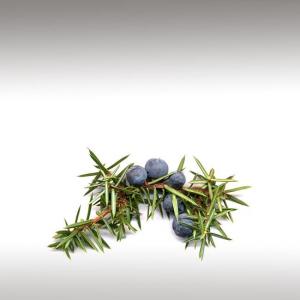

Botanical Name: Juniperus communis
Common Method of Extraction: Steam distillation
Part Typically Used: Berries
Color: Clear / Pale
Consistency: Thin
Perfumery Note: Middle
Strength of Initial Aroma: Crisp, woody, sweet, earthy, with almost a hidden fruity note.
Juniperus Communis, the Common Juniper, is a species in the genus Juniperus, in the family Cupressaceae. It has the largest range of any woody plant, throughout the cool temperate Northern Hemisphere from the Arctic south in mountains to around 30°N latitude in North America, Europe, Asia and Japan.
Juniperus Communis is a shrub or small coniferous evergreen tree, very variable and often a low spreading shrub, but occasionally reaching 10 m tall.
It has needle-like leaves in whorls of three, the leaves are green, with a single white stomatal band on the inner surface. The seed cones are berry-like, green ripening in 18 months to purple-black with a blue waxy coating, they are spherical, 4-12 mm diameter, and usually have three (occasionally six) fused scales, each scale with a single seed. The male cones are yellow, 2-3 mm long, and fall soon after shedding their pollen in March - April.
His species grows on dry, open, rocky, wooded hillsides, sand terraces, maritime escarpments, and on exposed slopes and plateaus. It is found on dunes or dune heath in coastal areas, on isolated mountains, and may spread into fields and pastures. Establishment is more likely in open spaces between older shrubs and may be favored by grazing.
Juniperus Communis grows in hilly to alpine regions up to an altitude of more than 3000 m. Common Juniper is intolerant of shade, found in open environments, colonizing plants reach maximum abundance on harsh, stressed environments in which competition is lacking. It grows on poor sites, tolerates full sun and wind and is pH adaptable.
All Juniper species grow berries, but some are considered too bitter to eat.
Juniper oil can be extracted from the berries, as well as the needles and wood. Juniperus Communis oil extracted from the berries is a more superior essential oil than that extracted from the twigs and needles. Do not confuse Juniper Berry essential oil with Cade essential oil, which is distilled from Juniper Wood (Juniperus Oxycedrus).
Common Method of Extraction: Steam distillation
Part Typically Used: Berries
Color: Clear / Pale
Consistency: Thin
Perfumery Note: Middle
Strength of Initial Aroma: Crisp, woody, sweet, earthy, with almost a hidden fruity note.
Juniperus Communis, the Common Juniper, is a species in the genus Juniperus, in the family Cupressaceae. It has the largest range of any woody plant, throughout the cool temperate Northern Hemisphere from the Arctic south in mountains to around 30°N latitude in North America, Europe, Asia and Japan.
Juniperus Communis is a shrub or small coniferous evergreen tree, very variable and often a low spreading shrub, but occasionally reaching 10 m tall.
It has needle-like leaves in whorls of three, the leaves are green, with a single white stomatal band on the inner surface. The seed cones are berry-like, green ripening in 18 months to purple-black with a blue waxy coating, they are spherical, 4-12 mm diameter, and usually have three (occasionally six) fused scales, each scale with a single seed. The male cones are yellow, 2-3 mm long, and fall soon after shedding their pollen in March - April.
His species grows on dry, open, rocky, wooded hillsides, sand terraces, maritime escarpments, and on exposed slopes and plateaus. It is found on dunes or dune heath in coastal areas, on isolated mountains, and may spread into fields and pastures. Establishment is more likely in open spaces between older shrubs and may be favored by grazing.
Juniperus Communis grows in hilly to alpine regions up to an altitude of more than 3000 m. Common Juniper is intolerant of shade, found in open environments, colonizing plants reach maximum abundance on harsh, stressed environments in which competition is lacking. It grows on poor sites, tolerates full sun and wind and is pH adaptable.
All Juniper species grow berries, but some are considered too bitter to eat.
Juniper oil can be extracted from the berries, as well as the needles and wood. Juniperus Communis oil extracted from the berries is a more superior essential oil than that extracted from the twigs and needles. Do not confuse Juniper Berry essential oil with Cade essential oil, which is distilled from Juniper Wood (Juniperus Oxycedrus).
Submitted by OperaDreamhouse (February 3, 2015)
Copaiba Balsam Essential Oil (Copaifera Spp) ☸ Essential oils ☸ Base / General
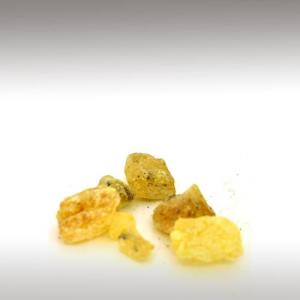

Botanical Name: Copaifera spp
Common Method of Extraction: Steam distilled
Part Typically Used: Resin
Color: Colorless liquid
Consistency:
Perfumery Note: Top /Middle/ Base
Strength of Initial Aroma: Mild, balsamic, sweet, woody bouquet.
This plant resin have other names: Copaiba, Copal, Balsam Copaiba, Copaiva, Jesuit's Balsam.
Copaifera Spp is a well branched tropical tree of the Burseraceae (Copal family), that grows up to 100 feet tall. It has pinnate leathery leaves and blossoms are borne in whitish racemes. The flowers are small and aromatic. The fruit is a coriaceous legume containing a single seed.
Most Copaifera tropical tree species produce oleoresins in their trunks and stems, which are used as medicine. Copaiba oleoresin production and its overall quality vary among species and individuals. This information is necessary in order to define rules of sustainable management. In Acre, local people recognize five Copaiba morphotypes (“yellow”, “red”, “white” and two kinds of “black” Copaiba), which are defined in accordance with bark and leaf characteristics.
Copal is a type of resin produced by plant or tree secretions, particularly identified with the forms of aromatic tree resins used by the cultures of pre-Columbian Mesoamerica as a ceremonially burned incense, as well as for a number of other purposes. The word Copal is derived from the Nahuatl language word "Copalli", meaning "Incense".
To the pre-Columbian Maya and contemporary Maya peoples it is known in the various Mayan languages as "Pom", although the word itself has been demonstrated to be a loanword to Mayan from Mixe-Zoquean languages.
It is sometimes likened to, or substituted for Amber and put in jewellery. Copal is still used by a number of indigenous peoples of Mexico and Central America as an incense, used during ceremonies such as the sweat lodge ceremony.
The balsam may be steam distilled to give Copaiba oil, a colorless to light yellow liquid with the characteristic odor of the balsam and an aromatic, slightly bitter, pungent taste. The oil consists primarily of sesquiterpene hydrocarbons. its main component is caryophyllene.
The production of Copaiba oil is socially significant to the Amazon because it represents approximately 95% of the country's oil-resin production industry.
Common Method of Extraction: Steam distilled
Part Typically Used: Resin
Color: Colorless liquid
Consistency:
Perfumery Note: Top /Middle/ Base
Strength of Initial Aroma: Mild, balsamic, sweet, woody bouquet.
This plant resin have other names: Copaiba, Copal, Balsam Copaiba, Copaiva, Jesuit's Balsam.
Copaifera Spp is a well branched tropical tree of the Burseraceae (Copal family), that grows up to 100 feet tall. It has pinnate leathery leaves and blossoms are borne in whitish racemes. The flowers are small and aromatic. The fruit is a coriaceous legume containing a single seed.
Most Copaifera tropical tree species produce oleoresins in their trunks and stems, which are used as medicine. Copaiba oleoresin production and its overall quality vary among species and individuals. This information is necessary in order to define rules of sustainable management. In Acre, local people recognize five Copaiba morphotypes (“yellow”, “red”, “white” and two kinds of “black” Copaiba), which are defined in accordance with bark and leaf characteristics.
Copal is a type of resin produced by plant or tree secretions, particularly identified with the forms of aromatic tree resins used by the cultures of pre-Columbian Mesoamerica as a ceremonially burned incense, as well as for a number of other purposes. The word Copal is derived from the Nahuatl language word "Copalli", meaning "Incense".
To the pre-Columbian Maya and contemporary Maya peoples it is known in the various Mayan languages as "Pom", although the word itself has been demonstrated to be a loanword to Mayan from Mixe-Zoquean languages.
It is sometimes likened to, or substituted for Amber and put in jewellery. Copal is still used by a number of indigenous peoples of Mexico and Central America as an incense, used during ceremonies such as the sweat lodge ceremony.
The balsam may be steam distilled to give Copaiba oil, a colorless to light yellow liquid with the characteristic odor of the balsam and an aromatic, slightly bitter, pungent taste. The oil consists primarily of sesquiterpene hydrocarbons. its main component is caryophyllene.
The production of Copaiba oil is socially significant to the Amazon because it represents approximately 95% of the country's oil-resin production industry.
Submitted by OperaDreamhouse (February 3, 2015)
Ledum Essential Oil (Ledum groenlandicum) ☸ Essential oils ☸ Base / General
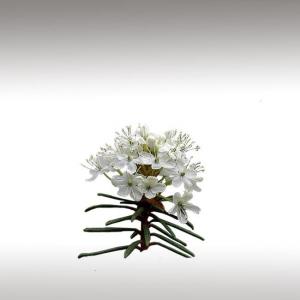

Botanical Name: Ledum groenlandicum
Common Method of Extraction: Steam distilled
Part Typically Used: Leaves, flowers
Color: Pale yellow
Consistency: Thin
Perfumery Note: Middle
Strength of Initial Aroma: Very pleasant, strong aromatic, somewhat similar to the Rhododendrons. Odor is cuminic, seedy and soapy with woody aspects.
There are several species of Ledum and it has several common names including Labrador Tea, Marsh Tea or Swamp Tea. Ledum often includes Tanacetum palustre and Rhododendron Tomentsum so it is definitely important to know your genus species and the common names for the oil you want to purchase.The Ledum was catalogued by the New World European Botanists. It was one of the first ones to be catalogued.
Heath family (Ericaceae). An erect, aromatic shrub that grows to one meter with twigs densely covered with long, soft hairs (villous). The narrow, leathery leaves are 2- 5 cm long, alternate, and evergreen. The leaves are dark green above with edges that curl under along the margins, and there is a dense mat of orange - brown hairs on the underside.
Numerous white flowers in tight clusters bloom from May to July. Each flower has a small five - toothed sepal tube with five separate petals, and 5 - 7 stamens. Ledum are low, slow-growing shrubs with evergreen leaves. Ledum grows in wetlands and bogs in western North America, from British Columbia to California to Colorado. Ledum Groenlandicum grows in peaty soils, shrubby areas, moss and lichen tundra.
Bees are much attracted by the flowers, but animals do not browse on the plants, which are said to be slightly poisonous.
The native people of Eastern Canada used this herb for tea, as a general tonic, providing well-being. Ledum has helped the native people of North America for more than 5,000 years.
Kate McCarty, a non - Indian woman married to a Makah, described bog Labrador tea on the Ts’oo - yuhs prairie as producing better crops after the Makah burned it: “The Labrador tea can just keep growing and growing and growing until it gets real leggy. And all that you have is just a few little leaves on top. But after it’s been burned then it starts all over again. It’s just like pinching flowers off of the Chrysanthemum to make them bush out”.
Common Method of Extraction: Steam distilled
Part Typically Used: Leaves, flowers
Color: Pale yellow
Consistency: Thin
Perfumery Note: Middle
Strength of Initial Aroma: Very pleasant, strong aromatic, somewhat similar to the Rhododendrons. Odor is cuminic, seedy and soapy with woody aspects.
There are several species of Ledum and it has several common names including Labrador Tea, Marsh Tea or Swamp Tea. Ledum often includes Tanacetum palustre and Rhododendron Tomentsum so it is definitely important to know your genus species and the common names for the oil you want to purchase.The Ledum was catalogued by the New World European Botanists. It was one of the first ones to be catalogued.
Heath family (Ericaceae). An erect, aromatic shrub that grows to one meter with twigs densely covered with long, soft hairs (villous). The narrow, leathery leaves are 2- 5 cm long, alternate, and evergreen. The leaves are dark green above with edges that curl under along the margins, and there is a dense mat of orange - brown hairs on the underside.
Numerous white flowers in tight clusters bloom from May to July. Each flower has a small five - toothed sepal tube with five separate petals, and 5 - 7 stamens. Ledum are low, slow-growing shrubs with evergreen leaves. Ledum grows in wetlands and bogs in western North America, from British Columbia to California to Colorado. Ledum Groenlandicum grows in peaty soils, shrubby areas, moss and lichen tundra.
Bees are much attracted by the flowers, but animals do not browse on the plants, which are said to be slightly poisonous.
The native people of Eastern Canada used this herb for tea, as a general tonic, providing well-being. Ledum has helped the native people of North America for more than 5,000 years.
Kate McCarty, a non - Indian woman married to a Makah, described bog Labrador tea on the Ts’oo - yuhs prairie as producing better crops after the Makah burned it: “The Labrador tea can just keep growing and growing and growing until it gets real leggy. And all that you have is just a few little leaves on top. But after it’s been burned then it starts all over again. It’s just like pinching flowers off of the Chrysanthemum to make them bush out”.
Submitted by OperaDreamhouse (February 2, 2015)
Gurjun Balsam Essential Oil (Dipterocarpus Turbinatus) ☸ Essential oils ☸ Base / General
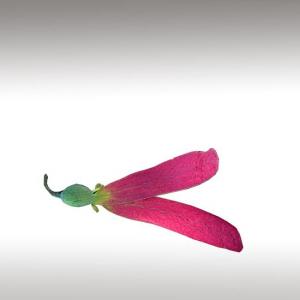

Botanical Name: Dipterocarpus turbinatus
Common Method of Extraction: Steam Distillation
Part Typically Used: Resin
Color: Pale yellow to amber clear
Consistency: Oily liquid
Perfumery Note:
Strength of Initial Aroma: Fresh, nutty scent, a mild, woody, sweet, balsamic bouquet with a uniform dry out of good tenacity.
Dipterocarpus Turbinatus ( India - Gurjan, Gurjun, Gurgina, Chinese - Jie Bu Luo Xiang, Swedish - Keruing, the last an international name for Dipterocarpus Wood) is a species of tree in the family Dipterocarpaceae native to western India and mainland Southeast Asia, and cultivated in surrounding areas. It is an important source of the wood known as keruing, and is often used in the plywood industry.
Dipterocarpus is a genus of flowering plants and the type genus of family Dipterocarpaceae. The genus has about 70 species, occurring in Southeast Asia. It is an important component of dipterocarp forests. Its generic name comes from Greek and means "Two-winged fruits". The greatest diversity of Dipterocarpus species occurs on Borneo, with many endemic to the island.
The resin of the tree (known internationally as East Indian Copaiba Balsam is used in India, where it is the source of Kanyin oil and Gurjun oil and in Cambodia, where the almost solid resin is especially used to prepare torches.
The essential oil is soluble in alcohol, while insoluble in water. Gurjun oil is extracted through the process named steam distillation. The natural essential oil is widely used in cosmetics for perfumery purposes as well as to various other medical purposes. It is also used by the name of Gurjun Balsam oil.
In natural perfumery can be used in a wide variety of compostions as inexpensive fixative and blender/modifier. Its soft sweet woody-balsamic bouquet is superb for rounding off rough edges and compositions and seamlessly linking together one part of the composition with other parts.
Common Method of Extraction: Steam Distillation
Part Typically Used: Resin
Color: Pale yellow to amber clear
Consistency: Oily liquid
Perfumery Note:
Strength of Initial Aroma: Fresh, nutty scent, a mild, woody, sweet, balsamic bouquet with a uniform dry out of good tenacity.
Dipterocarpus Turbinatus ( India - Gurjan, Gurjun, Gurgina, Chinese - Jie Bu Luo Xiang, Swedish - Keruing, the last an international name for Dipterocarpus Wood) is a species of tree in the family Dipterocarpaceae native to western India and mainland Southeast Asia, and cultivated in surrounding areas. It is an important source of the wood known as keruing, and is often used in the plywood industry.
Dipterocarpus is a genus of flowering plants and the type genus of family Dipterocarpaceae. The genus has about 70 species, occurring in Southeast Asia. It is an important component of dipterocarp forests. Its generic name comes from Greek and means "Two-winged fruits". The greatest diversity of Dipterocarpus species occurs on Borneo, with many endemic to the island.
The resin of the tree (known internationally as East Indian Copaiba Balsam is used in India, where it is the source of Kanyin oil and Gurjun oil and in Cambodia, where the almost solid resin is especially used to prepare torches.
The essential oil is soluble in alcohol, while insoluble in water. Gurjun oil is extracted through the process named steam distillation. The natural essential oil is widely used in cosmetics for perfumery purposes as well as to various other medical purposes. It is also used by the name of Gurjun Balsam oil.
In natural perfumery can be used in a wide variety of compostions as inexpensive fixative and blender/modifier. Its soft sweet woody-balsamic bouquet is superb for rounding off rough edges and compositions and seamlessly linking together one part of the composition with other parts.
Submitted by OperaDreamhouse (February 2, 2015)
Page 29 of 48

